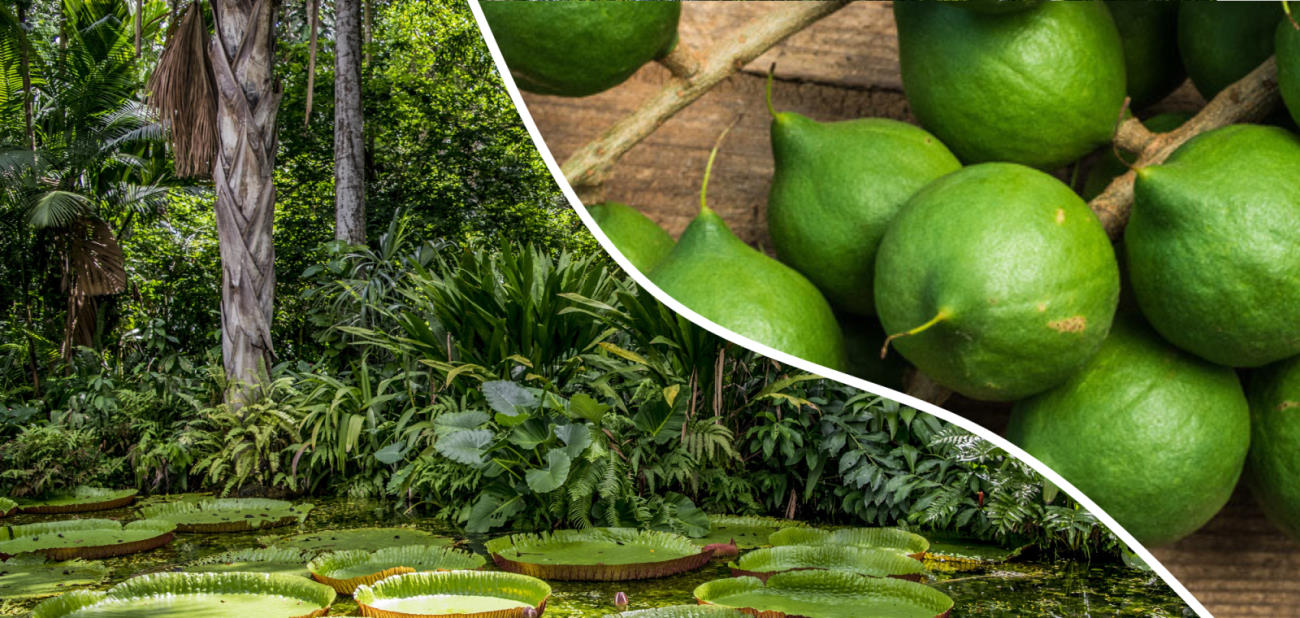
With 3 times the amount of retinol (vitamin A) as Rosehip oil and 50% more vitamin E than Argan oil, Cacay seed oil is nature's own anti-aging powerhouse for skin. But that's not all.....
Cacay is a rainforest plant that is native to the Amazon. The skincare benefits of Cacay pale in comparison to the sustainable, bio-diverse contribution of this plant.
FOR THE ENVIRONMENT
Excessive farming (for ingredients such as Palm oil) and unchecked forest fires have lead to deforestation. Deforestation leads to loss of bio-diversity in one of the world's richest bio-reserves - the Amazon basin. Eventually this adds up to climate change.
Cacay is a reforestation crop. The tree captures copious amounts of Carbon Dioxide (CO2) from the atmosphere and, by constantly shedding its leaves, it improves soil. So it is widely planted to repair areas that have been impacted by deforestation.
As the benefits of Cacay are starting to be recognized in the world, it's no surprise that the World Bank has invested in growing a Bio-economy in South America that supports Cacay farming to increase bio-diversity and reduce the carbon footprint.
FOR LOCAL COMMUNITIES
Being an easy crop to plant and farm, provides a stable source of income and nutrition for local, poor communities.
CROP VALUE
Cacay is a zero-waste fruit!
- The nuts have a high nutritional value and considered a super nut. Even a nut milk is extracted from the nut as a dairy replacement
- The oil extracted is considered a miracle oil for skincare. Aside from it's anti-aging benefits, it is used by locals to make salves to soothe skin irritations and minor injuries
- The peel is used as compost
- Cacay shells are used as a bio fuel
- The fruit is rich in protein (40%), essential fatty acids (Omega 3, 6, 9 ), minerals and fiber, making it an economically nutritious food in local cuisines.




Leave a comment